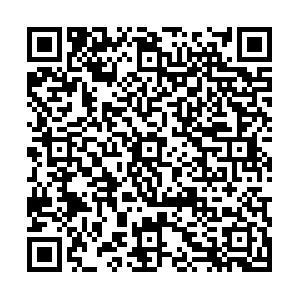Numerical simulation on aerodynamic interference of UAVs like X⁃47B in rhombus formation
-
摘要:
设计了一种由4架类X⁃47B飞翼布局无人机(UAVs)组成的菱形编队。通过求解RANS方程的数值模拟方法,研究了菱形编队无人机气动干扰问题,详细分析了影响机理,定量给出了编队减阻效果。计算结果表明:头机气动性能基本保持不变。两侧僚机受上洗气流影响,其减阻效果明显。尾机主要受下洗气流影响,其阻力增大,对编队久航和远航不利。在重力配平条件下,两侧僚机飞行阻力的减小是由攻角减小和诱导阻力减小共同引起的。尾机在编队中飞行阻力的增大主要是攻角增大带来的阻力增加,诱导阻力增大仅带来了20%的阻力增量。从减小下洗气流对尾机的不利影响出发,对不同垂向间距的尾机升阻特性进行了研究,并参考雁群头鸟变换行为机制,给出了无人机菱形编队飞行建议。
Abstract:A rhombus formation composed of 4 unmanned aerial vehicles (UAVs) like X‑47B with flying wing configuration was designed.By solving the RANS equations,the aerodynamic interference of UAVs in rhombus formation flight was studied,and the related mechanism was analyzed in detail.The effect of formation drag reduction was given quantitatively.Computational results showed that the aerodynamic performance of head UAV remained unchanged,and the drag reduction of wing UAVs affected by upwash flow was obvious,but the drag of tail UAV mainly affected by downwash flow increased,making it unfavorable to the long voyage of formation.Under the condition of gravity balancing,the reduction of flight drag of wing UAVs was caused by the decrease of attack angle and induced drag,while the increase of flight drag of tail UAV was mainly caused by the increase of attack angle,and the induced drag only brought 20% of flight drag increase of tail UAV.In order to reduce the adverse effect of downwash flow on tail UAV,the aerodynamic characteristics of tail UAV with different vertical spacing were studied.According to the behavior mechanism of head bird transformation in geese,the flying suggestions of rhombus formation were given.
-
Key words:
- rhombus formation /
- upwash flow /
- downwash flow /
- aerodynamic interference /
- drag reduction
-
表 1
时气动力计算结果比较 Table 1. Comparison of calculation results of aerodynamic force at
无人机 升力系数Cl 阻力系数Cd 升阻比k Single 0.329 78 0.017 80 18.52 UAV1 0.335 27 0.017 83 18.80 UAV2 0.373 87 0.015 12 24.72 UAV3 0.373 88 0.015 12 24.72 UAV4 0.281 19 0.018 02 15.61 表 2 巡航状态下气动力计算结果比较
Table 2. Comparison of calculation results of aerodynamic force in cruise state
无人机 攻角 /(°) 升力系数Cl 阻力系数Cd 升阻比k Single 6.0 0.329 78 0.017 80 18.52 UAV1 6.0 0.334 92 0.017 84 18.77 UAV2 5.3 0.333 85 0.013 33 25.05 UAV3 5.3 0.333 85 0.013 32 25.06 UAV4 7.1 0.334 68 0.022 43 14.92 表 3 单机气动力计算结果
Table 3. Calculation results of aerodynamic force of single UAV
攻角 /(°) 升力系数Cl 阻力系数Cd 升阻比k 5.3 0.289 36 0.015 75 18.37 7.1 0.392 31 0.021 52 18.23 表 4 巡航状态Single和UAV4气动力计算结果比较
Table 4. Comparison of calculation results of aerodynamic force of single and UAV4 in cruise state
无人机 垂向间距 攻角 /(°) 升力系数Cl 阻力系数Cd 升阻比k Single 6.0 0.329 78 0.017 80 18.52 UAV4 0.0b 7.1 0.334 68 0.022 43 14.92 UAV4 0.5b 6.6 0.334 21 0.021 60 15.47 -
[1] 樊琼剑,杨忠,方挺,等.多无人机协同编队飞行控制的研究现状[J].航空学报,2009,30(4):683⁃691.FAN Qiongjian,YANG Zhong,FANG Ting,et al.Research status of coordinated formation flight control for multi⁃UAVs[J].Acta Aeronautica et Astronautica Sinica,2009,30(4):683‑691.(in Chinese) [2] 徐博,张大龙.基于量子行为鸽群优化的无人机紧密编队控制[J].航空学报,2020,41(8):313⁃324.XU Bo,ZHANG Dalong.Tight formation flight control of UAVs based on pigeon inspired algorithm optimization by quantum behavior[J].Acta Aeronautica et Astronautica Sinica,2020,41(8):313⁃324.(in Chinese) [3] PACHTER M,D'SZZO J J,PROUD A W.Tight formation flight control[J].Journal of Guidance,Control,and Dynamic,2001,24(2):246⁃254. [4] BLAKE W,MULTHOPP D.Design,performance and modeling considerations for close formation flight[R].AIAA⁃1998‑4343,1998. [5] ATILLA D,SRIRAM V.Modeling of aerodynamic coupling between aircraft in close formation[J].Journal of aircraft,2005,42(7):941⁃945. [6] SRIRAM V,ATILLA D.Modeling of aerodynamic coupling between aircraft in close proximities[R].AIAA⁃2004⁃5172,2004. [7] SHAN J,LIU H.Close formation flight control with motion synchronization[J].Journal of Guidance Control,and Dynamics,2005,28(6):1316⁃1320. [8] 牟勇飚.无人机编队中的气动耦合问题研究[D].西安:西北工业大学,2006.MOU Yongbiao.Research on aerodynamic coupling in UAV formation flight[D].Xi'an:Northwestern Polytechnical University,2006.(in Chinese) [9] 李博,李学仁,杜军,等.无人机紧密编队气动耦合分析与仿真[J].计算机仿真,2015,32(8):94⁃98.LI Bo,LI Xueren,DU Jun,et al.Aerodynamic coupling analysis and simulation of multi⁃UAV tight formation flight[J].Computer Simulation,2015,32(8):94⁃98.(in Chinese) [10] 祁圣君,张喆.无人机近距编队飞行建模与仿真[J].航空工程进展,2012,3(3):362⁃366.QI Shengjun,ZHANG Zhe.Modeling and simulation of UAV close formation flight control[J].Advances in Aeronautical Science and Engineering,2012,3(3):362⁃366.(in Chinese) [11] HANSEN J,COBLEIGH B,RAY R,et al.Vortex⁃induced aerodynamic effects on a trailing F⁃18 aircraft flying in close formation[R].AIAA⁃2002⁃3432,2002. [12] BANGASH Z A,SANCHEZ R P,AHMED A,et al.Aerodynamics of formation flight[J].Journal of Aircraft,2006,43(4):907⁃912. [13] BLAKE W B,GINGRAS D R.Comparison of predicted and measured formation flight interference effects[J].Journal of Aircraft,2004,41(2):201⁃207. [14] ROMANDER E,BETZINA M,SILVA M,et al.Investigating tiltrotor formation flight via 1/48⁃sacle wind tunnel experiment[R].Phoenix,US:American Helicopter Society 62nd Annual Forum,2006. [15] AYUMU I,FUMIHIDE M,MASAHITO A.Detailed observations of interactions of wingtip vortices in close formation flight[J].Journal of Aircraft,2012,49(1):206⁃213. [16] HWANKEE C,SUNTAE L,CHEOLHEUI H.Experimental study on the aerodynamic characteristics of a fighter⁃type aircraft model in close formation flight[J].Journal of Mechanical Science and Technology,2014,28(8):3059⁃3065. [17] 刘志勇,陶洋,史志伟,等.编队飞行风洞实验研究[J].实验流体力学,2016,30(4):20⁃25.LIU Zhiyong,TAO Yang,SHI Zhiwei,et al.Investigation on formation flight in wind tunnel[J].Journal of Experiments in Fluid Mechanics,2016,30(4):20⁃25.(in Chinese) [18] WAGNER M G,JACQUES L D,BLAKE W,et al.Flight test results of close formation flight for fuel savings[R].AIAA⁃2002⁃4490,2002. [19] RAY R J,COBLEIGH B R,VACHON M J,et al.Flight test techniques used to evaluate performance benefits during formation flight[R].AIAA⁃2002⁃4492,2002. [20] PAHLE J,BERGER D,VENTI M,et al.An initial flight investigation of formation flight for drag reduction on the C⁃17 aircraft[R].AIAA⁃2012⁃4802,2012. [21] 袁园,闫建国,屈耀红.多无人机编队飞行气动耦合仿真[J].飞行力学,2013,31(1):29⁃32.YUAN Yuan,YAN Jianguo,QU Yaohong.The aerodynamic coupling simulation in the formation flight of multi⁃UAV[J].Flight Dynamics,2013,31(1):29⁃32.(in Chinese) [22] 刘志勇.紧密编队飞行涡流减阻机理及队形参数优化研究[D].合肥:中国科学技术大学,2016.LIU Zhiyong.Investigation on the mechanism of drag reduction and positional parameters optimization in close⁃formation flight[D].Hefei:University of Science and Technology of China,2016.(in Chinese) [23] 刘毅,赵晓霞,袁志敏,等.基于RANS方程的双机近距干扰气动特性计算分析[C]∥2019年(第四届)中国航空科学技术大会论文集.北京:中航出版传媒有限责任公司,2019:1101⁃1106. [24] 王辰,黎军,富佳伟,等.基于蜂群编队形式的气动耦合优化模型研究[J].飞机设计,2019,39(2):15⁃19.WANG Chen,LI Jun,FU Jiawei,et al.The research on aerodynamic coupling optimization model based on swarm formation[J].Aircraft Design,2019,39(2):15⁃19.(in Chinese) [25] 李文皓,张珩.无人机编队飞行技术的研究现状与展望[J].飞行力学,2007,25(1):9⁃11.LI Wenhao,ZHANG Heng.Reviews on unmanned aerial vehicle formation flight[J].Flight Dynamics,2007,25(1):9⁃11.(in Chinese) [26] 牟斌,肖中云,周铸,等.多重网格技术在复杂粘性流场计算中的应用及研究[J].空气动力学学报,2006,24(1):51⁃54.MOU Bin,XIAO Zhongyun,ZHOU Zhu,et al.Application and investigation of multiblock multigrid method in complicated viscous flow fields calculation[J].Acta Aerodynamica Sinica,2006,24(1):51⁃54.(in Chinese) [27] 侯凌云,严传俊.复杂几何域中不可压流动的多重网格计算[J].航空动力学报,1998,13(3):245⁃248,343.HOU Lingyun,YAN Chuanjun.A multigrid computation of incompressible flow in complex geometries[J].Journal of Aerospace Power,1998,13(3):245⁃248,343.(in Chinese) [28] 余永刚,黄勇,周铸,等.飞翼布局气动外形设计[J].空气动力学学报,2017,35(6):832⁃836,878.YU Yonggang,HUANG Yong,ZHOU Zhu,et al.Aerodynamic design of a flying⁃wing aircraft[J].Acta Aerodynamica Sinica,2017,35(6):832⁃836,878.(in Chinese) [29] 肖中云,刘刚,牟斌,等.旋转坐标系下分区计算的LU隐式方法[J].航空学报,2018,39(10):125⁃131.XIAO Zhongyun,LIU Gang,MOU Bin,et al.LU implicit methods for partitioned computation in rotating coordinate system[J].Acta Aeronautica et Astronautica Sinica,2018,39(10):125⁃131.(in Chinese) [30] WEIMERSKIRCH H,MARTIN J,CLERQUIN Y,et al.Energy saving in flight formation[J].Nature,2001,413:697‑698. [31] SPEAKMAN J R,BANKS D.The function of flight formations in Greylag Geese Anser anser; energy saving or orientation?[J].Ibis,2010,140(2):280⁃287. [32] 周子为,段海滨,范彦铭,等.仿雁群行为机制的多无人机紧密编队[J].中国科学 技术科学,2017,47(3):230⁃238.ZHOU Ziwei,DUAN Haibin,FAN Yanming,et al.Unmanned aerial vehicle close formation control based on the behavior mechanism in wild geese[J].SCIENTIA SINICA Technologica,2017,47(3):230⁃238.(in Chinese) [33] VOELKL B,PORTUGAL S J,UNSOLD M,et al.Matching times of leading and following suggest cooperation through direct reciprocity during V⁃formation flight in ibis[J].Proceedings of the National Academy of Sciences,2015,112(7):2115⁃2120. -








 下载:
下载:




















